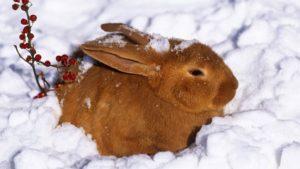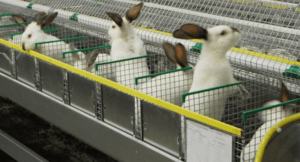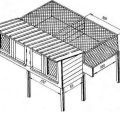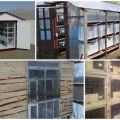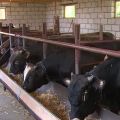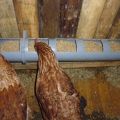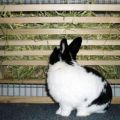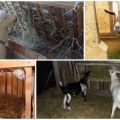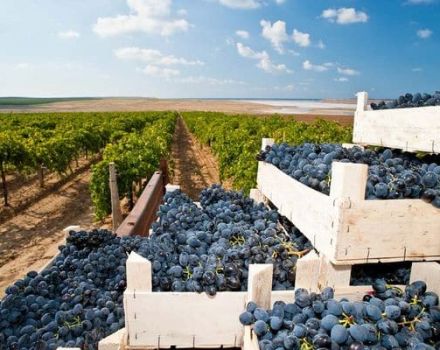Diagrams and drawings of cages for decorative rabbits and how to do it yourself
Rabbits are quite lively animals. Therefore, a cage for an active decorative rabbit is selected quite spacious and safe. Given the choice of building materials, it is easy to assemble the structure with your own hands. Or, you can use a range of pet stores that offer a wide range of cages made from different materials.
The main requirements for a cage for decorative rabbits
Basic requirements for the construction: walls and ceiling are made of metal mesh, the animal should not slide on the floor, so the coating should be rough. For safe and convenient movement, the doorway is equipped with a removable wooden ladder bridge. An interesting solution is multi-storey structures.
Dimensions and construction drawings
To limit the movement of a dwarf rabbit, it is recommended to combine a compact cage with an aviary. Or they choose a spacious structure 0.8-1 m long, 0.6 m high, 0.5 m wide. Often two-story structures are assembled for pets.
The construction scheme is simple: a tray, a bowl and a drinker are placed on the first tier. The second tier is made as free as possible, and the mink house is attached at the end. Such designs are especially practical because they take up little space in the apartment and provide room for the animal to move.
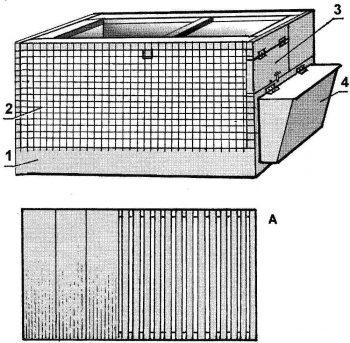
Choosing a location
When choosing a place for a cage, you need to take into account the characteristics of the pet's body. Rabbits are quite capricious - they react poorly to cold, and are also susceptible to drafts, overheating. Therefore, the structure is not placed near heating devices and radiators, under air conditioners. It is not advisable to leave a rabbit's dwelling in the hallway or in the kitchen. The best option is in the living room, not far from the window.
How to make a cage for a decorative rabbit with your own hands
If you have the necessary tools (drill, pliers, metal scissors, hammer, hacksaw) and materials (plywood, metal mesh, wood slats, nails), then it is not difficult to assemble a structure of the required size. The main stages of work:
- Two bottoms (60x90 cm) are cut out of plywood, the back wall - with parameters 90x50 cm.
- Frames are assembled from wooden slats, on which walls made of metal mesh are fixed.
- The back plywood wall is attached to the base using metal corners, then the side walls.
- The second tier is assembled in the same way. A ladder is installed on the second tier.

The final stage of assembly is to fix the door on the hinges. The bottom is covered with linoleum or a piece of plastic.
Arrangement of the cell
Special devices will provide comfort and convenience to the animal. A tray, a drinking bowl, a food bowl, and a mink house are placed in the cage.
Feeders
It is recommended to equip the feeding place with ceramic bowls with a thick bottom so that the pet cannot turn them over. The best option is a deep bowl, into which it is convenient to pour compound feed and put vegetables and fruits. Or the container is fixed low on the wall. For dry or green food, a separate tray is installed or a special structure, a nursery, is fixed on the wall of the structure.
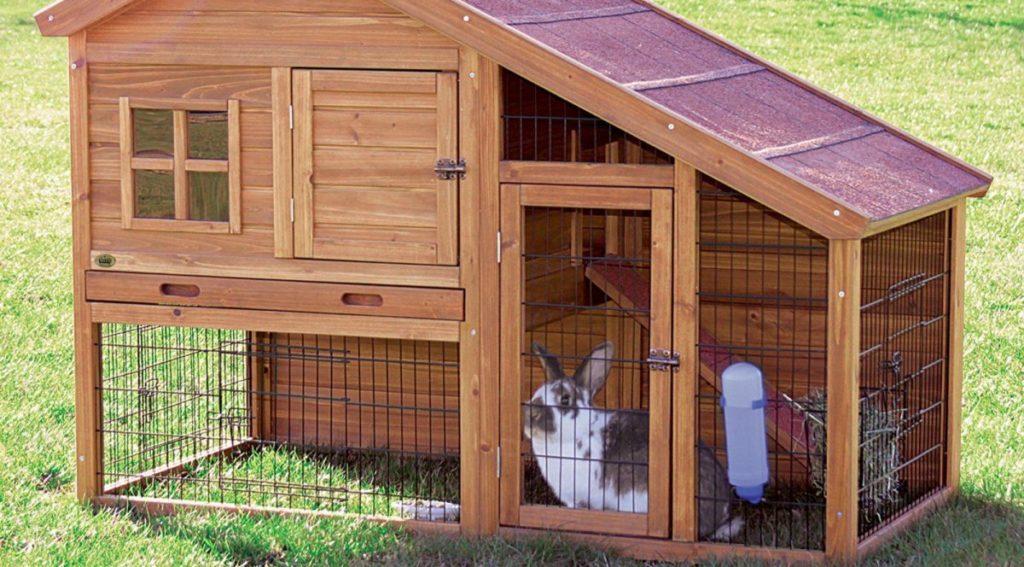
Drinkers
To make it easier to keep the cage clean, an automatic drinker in the form of an inverted bottle equipped with a valve is fixed on the wall. Not all pets can be trained to drink from such a drinking bowl. Therefore, an alternative is a traditional 5-7 cm deep bowl. It is advisable to arrange a place for the drinker away from the trough so that the rabbit does not pollute the water when spreading feed.
Tray
It is recommended to choose a plastic product that is easy to clean and wash. Manufacturers offer triangular containers with a depth of 10-12 cm, which can be fixed in the corner of the cage. Also use a regular rectangular tray with a lattice bottom and tray. Most often, a special cat litter is poured into the container. You can train your pet to the toilet with finely cut paper or napkins.
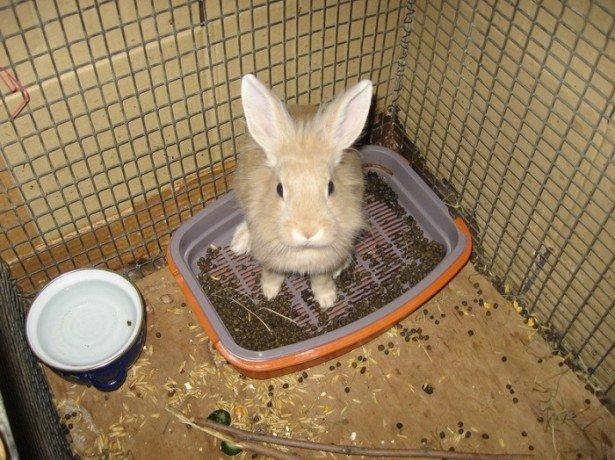
Shelter
Every pet needs a secluded corner where it can hide or rest. Usually a house is installed inside a spacious cage. The original solution is to fix the mink shelter on the outside of the cage, while the inner area of the structure remains free.
Litter
The bottom of the cage should not be slippery. Not the best option - a hard surface or a metal grill. Some owners put a layer of sawdust into the cage. It should be borne in mind that accidentally wet particles will stick to the paws of animals. A practical option is to lay on the bottom a piece of dense fabric, which is easy to pull out and wash, or linoleum.
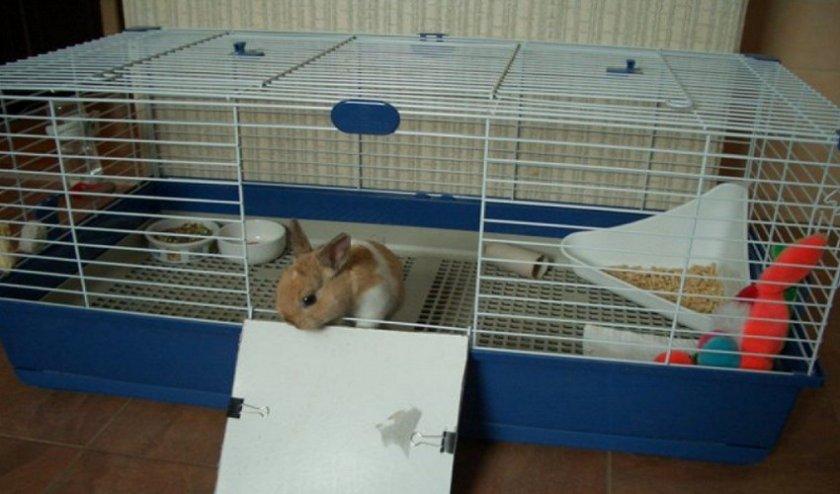
Possible problems
The rabbit needs a well-ventilated home. Therefore, variants of cages with plastic walls are not suitable. The cage should be high enough so that the rabbit, standing on its hind legs, can freely straighten its ears. The design should have enough space for the allocation of feeding areas, rest, toilet.
It is not recommended to choose products with enameled metal elements, as the rabbit is able to chew on the coating. If there is no separate door on the second floor, then getting the rabbit will be problematic.
The approximate cost of finished products
Budget options for cages made of galvanized mesh (parameters 59x36x31 cm) cost 3-4 thousand rubles. A structure of the same shape, assembled from wooden elements, is estimated at 10 thousand rubles. More spacious structures (parameters 102x52x40 cm) are valued higher - about 6 thousand rubles. A spacious cage with a plastic base, equipped with bowls, a drinker and a small house, is estimated at 7 thousand rubles.
When choosing a design, it is not recommended to focus on the age of the animal and buy a small cage for the rabbit. The pet will grow very quickly. Therefore, it is advisable to immediately choose a model that is spacious and comfortable for the pet, which will be easy to clean.
